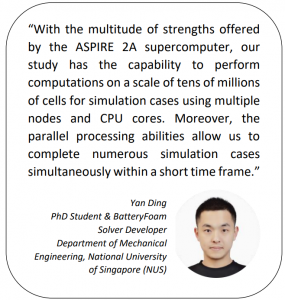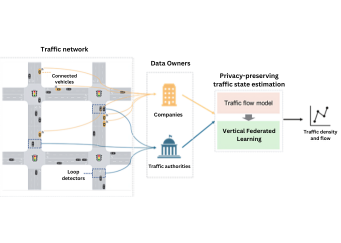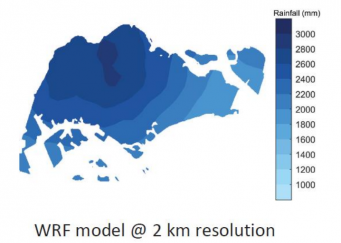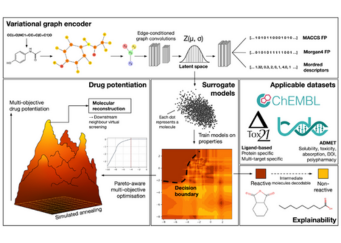Researchers from NUS tap on supercomputing to simulate the multi-physical processes of lithium-ion batteriesin order to develop cooling strategies for more advanced battery designs. These efforts are poised to contribute significantly to the realisation of an EV-powered society and a greener future in Singapore.
With the introduction of the Singapore Green Plan 2030, the Singapore government has set ambitious targets to achieve net-zero emissions by 2050. In order to reach this goal, various green initiatives are being implemented, one of which is Singapore’s aim to operate a fully electric and hybrid fleet of 10,000 vehicles by 2030 and to achieve the vision of 100% cleaner energy vehicles by 2040.
Electric vehicles powered by lithium-ion battery (LIB) have high electrical energy densities and run the risk of thermal runaway (TR) under conditions like overcharging, superheated working environments, collision, and crashing. Therefore, it is important to predict the safety rick of LIBs under a series of abuse conditions such as over-charging and discharging, to propose reliable thermal management and cooling strategies.
The Energy Innovation Laboratory (EIL) at the National University of Singapore’s (NUS) Department of Mechanical Engineering, led by Professor Zhang Huangwei, is leveraging on NSCC’s ASPIRE 2A supercomputing resources to actively develop a BatteryFoam solver package based on the open-source OpenFOAM® platform. The group’s primary objective is to leverage BatteryFoam to carry out computational studies on multiphysical processes of LIBs, including electrochemical reactions, electrical parameter variation, thermodynamic processes, and the critical thermal runaway investigation and mitigation.

The team uses an Electrochemical-Electrical partial model to comprehensively analyse the electrochemical reaction intensity, open-circuit voltage, working voltage, overpotential, ion current, and in-plane current density. Furthermore, the thermal coupling model will provide valuable insights into temperature distribution and heat generation power within the battery. Built on the research findings from the BatteryFoam, the effective thermal management and cooling strategies for LIBs are developed alongside more advanced battery designs. These efforts are poised to contribute significantly to the realisation of an EVpowered society and a greener future in Singapore.
To find out more about the NSCC’s HPC resources and how you can tap on them, please contact [email protected].
NSCC NewsBytes August 2023
Other Case Studies
Privacy-Preserving Data Fusion for Traffic State Estimation
Researchers from National University of Singapore (NUS) are proposing a privacy-preserved data fusion algorithm for traffic state estimation (FedTSE) to facilitate collaboration...
Enhancing Weather Prediction in Singapore: Leveraging Climate Model Simulations for Precision
Researchers from NUS Tropical Marine Science Institute are leveraging supercomputing to fine-tune Weather Research and Forecasting (WRF) Model and downscale hundreds of years of...
Advancing Drug Discovery Research using NSCC HPC resources
Researchers from Nanyang Technological University (NTU) are applying variational graph encoders as an effective generalist algorithm in computer-aided drug design (CADD)....


